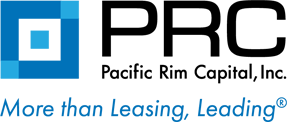Why do 8 out of 10 companies lease some, if not most, of their equipment?
Why is 30% of all capital equipment in America leased?
Leasing offers many benefits compared to other financing methods
Tax Deductions
The IRS says an operating lease is not a purchase. That’s because lease payments are treated as expenses on a company’s balance sheet. Instead, it is classified as a tax-deductible overhead expense.
Benefit: You can deduct the lease payments from your corporate income taxes. Plus, leasing gives you an immediate tax write-off. And you do not have to depreciate your equipment over five to seven years.
Balance Sheet Management
An operating lease is not considered a long-term debt or liability.
Benefit: It does not appear as a debt on your financial statement. This makes your company more attractive to traditional lenders.
Capital Conservation
Certain types of leases help you better manage your balance sheet and improve your overall financial picture.
Benefit: You can conserve operating capital and free up working capital and bank credit lines for inventory, expansion, and emergencies.
100% Financing:
With leasing, there is no down payment. Leasing is equivalent to 100% financing.
Benefit: You will have more money to invest in other revenue-generating activities.
Flexibility:
You can add or upgrade your lease at any point during the lease term. You can also add installation, maintenance, and other services to your lease.
Benefit: Leases are more flexible than traditional financing.
Customized Solutions:
You can custom-tailor a program to fit your cash flow needs.
Benefit: You can create a program that fits your cash flow, budget, transaction structure, and cyclical fluctuations.
Asset Management
You may use the leased equipment for specific periods of time at fixed payments. The lessor assumes and manages the risk of equipment ownership.
Benefit: At the end of the lease, the lessor is responsible for the disposition of the asset.
Upgraded Technology
Leasing allows you to keep up with the latest technology.
Benefit: You will never get caught with obsolete equipment and you can upgrade or add equipment to keep up with the competition.
Speed
You can respond quickly to new opportunities with minimal documentation and red tape. Typically, your lease will be approved within one or two days.
Benefit: You can quickly obtain your leased equipment.
Improved Cash Forecasting
Your lease payments don’t change. You will always know the amount and number of lease payments.
Benefit: You can accurately forecast cash requirements for your equipment.
Flexible End-of-Term Options
At the end of the lease, you can return the equipment, renew the lease, or purchase the equipment.
Benefit: You have the freedom to do what is best for your company.
Tax Benefits
The tax benefits of ownership are passed on to you in the form of lower monthly payments.
Benefit: You will enjoy many tax advantages.
Improved Earnings
Operating lease accounting provides a lower cost than a capital lease in the early years of a lease.
Benefit: Your earnings will improve.
Purchasing Power
Leasing allows you to acquire more and/or higher end equipment.
Benefit: Purchasing power is increased.

